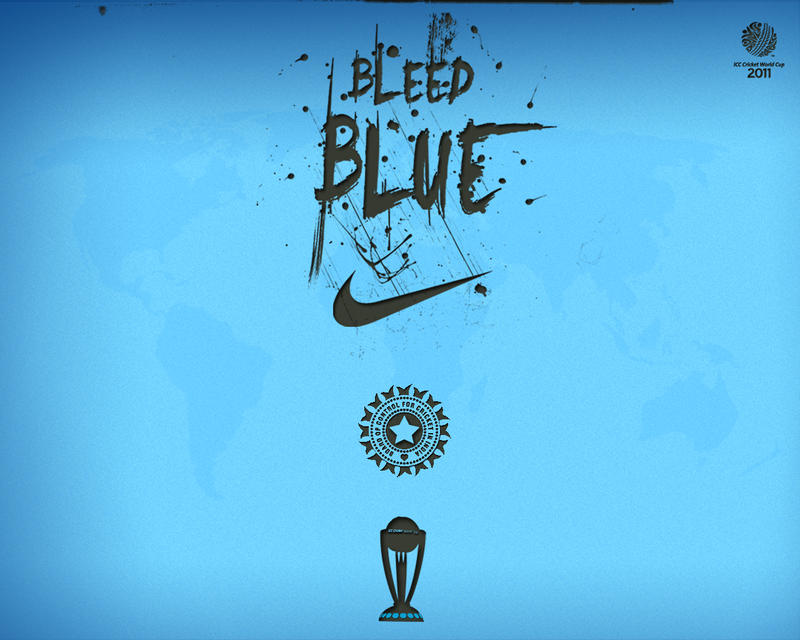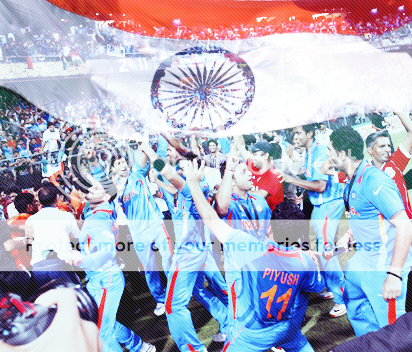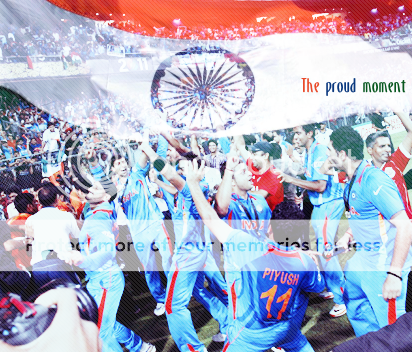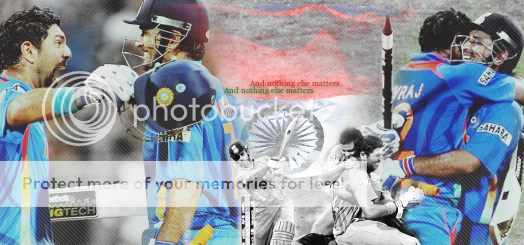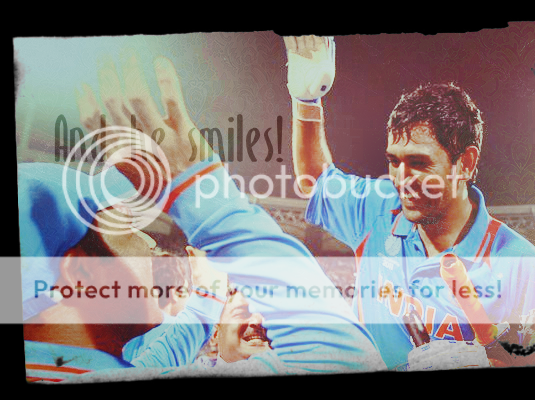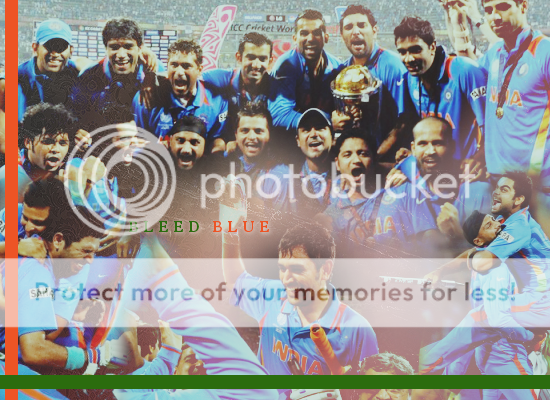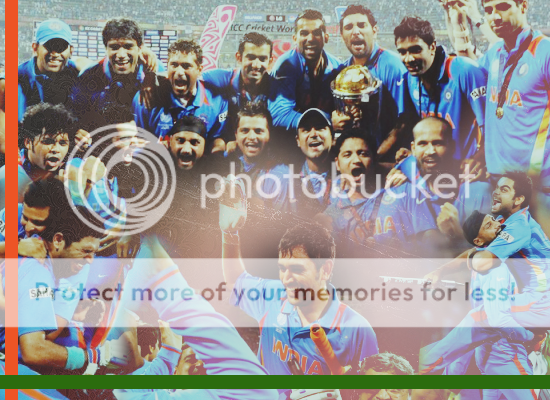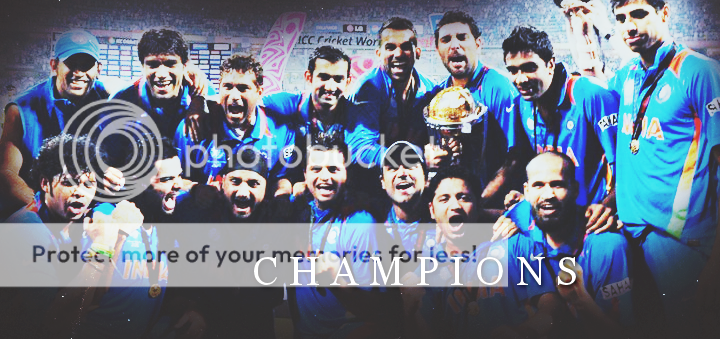History of Indian Cricket The Indian Cricket Team made its Test debut in 1932 and has since advanced to be among the top four test teams in the ICC rankings in each of 2005 to 2008.The team won the ICC Cricket World Cup in 1983 and again,after a long wait of 28 years,on 2nd April 2011.
India's first ever Test victory came against England at Madras in 1952. India's first series victory was against Pakistan later the same year. In 1954, India drew a 5-Test series with Pakistan 0-0, the batting strength from India had come from Polly Umrigar and Vijay Manjrekarwhile the prime bowler was Subhash Gupte with 21 wickets in the series. India's first series against New Zealand in 1956 created a comprehensive series victory for India, winning the 5-Test series 2-0.MH Mankad was excellent in his batting, averaging 105.2 in the series while scoring 526 runs. Once again, S.M. Gupte held India's bowling together, with 34 wickets. The remainder of the 1950s did not show as good results as the start: India lost a 3-Test series to Australia (2-0), lost a 5-Test series against the West Indies (3-0), took a 5-0 thrashing at the hands of England, and lost a second series against a strong Australian side (2-1).India won the Cricket World Cup in 1983, defeating West Indies in an exciting final. In 1985, India won the World Championship of Cricket in Australia. Then came the emergence of Mohinder Amarnathand "Mr. Dependable" Dilip Vengsarkar who was the undisputed No. 1 batsman in 1986-87. Sunil Gavaskar became the first batsman to accumulate 10,000 runs in Test cricket, and went on to register a record 34 centuries, surpassed only recently by Sachin Tendulkar. Kapil Dev, a genuine all-rounder, became the highest wicket taker in Test cricket.The emergence of Sachin Tendulkar and Anil Kumblein 1989 and 1990 was to herald an era of Indian cricket that was dominated by stars and individual brilliance. Sachin Tendulkar became arguably the best batsman in the world, along with Brian Lara of the West Indies and in 1998, Sir Donald Bradman himself remarked that Tendulkar batting style was similar to his.Soon after this,Saurav Ganguly took over as captain, and the New Zealander John Wright became coach. Ganguly's captaincy heralded a new era in Indian cricket. It began, perhaps, in the famous series against Australia in 2001, whenSteve Waugh's strong team was defeated 2-1 in a Test series after having taken a 1-0 lead at Mumbai. The series is best known for a remarkable turnaround by the Indian team in the Kolkata Test, when VVS Laxman, Rahul Dravid and Harbhajan Singh's performance took India to victory after they had followed on. This was followed by stellar performances by the team when playing abroad, with Test victories coming in Zimbabwe, Sri Lanka, West Indies, England, Australia, and a famous series victory against arch-rivals Pakistan in 2004. The series in England in 2002 is billed as Rahul Dravid's series, as he became the top scorer for the Indians, with centuries coming at Trent Bridge in Nottingham, Headingley in Leeds and a famous 217 at the Oval in London. This was followed by a sensational win in Australia at Adelaide in 2003, where Dravid, VVS Laxman and Ajit Agarkar scripted a come-from-behind victory after the team had conceded 556 runs in the first innings. The series win in Pakistan that followed was marked by Virender Sehwag becoming the first Indian to score a triple century in Test cricket. In the bowling department, India unearthed a plethora of fast-bowling talent, with Zaheer Khan, Ashish Nehra, and later Irfan Pathan and L Balaji leading the pack. The veteran Anil Kumble became the highest wicket-taker for India after surpassing Kapil Dev, and also passed the 500-mark in March 2006.
The Year 2005 saw one of India's Veteran batsman Rahul Dravid being appointed the Captain.This triggered a revival in the team's fortunes, following the emergence of several coming of age of players like Irfan Pathan and Yuvraj Singh. A thumping home series victory over Sri Lanka in 2005 and a drawn series with South Africa put India at 2nd place in the ICC ODI rankings. This was followed by a convincing ODI series win in Pakistan in early 2006 following a loss in the Test series, which gave India the world record of 17 successive ODI victories while batting second. 2006 saw was yet again an initial good performance in the Tests, giving India its first Test match win in South Africa, although they went on to lose the series 2'1. This Test series was marked by Ganguly's comeback to the Indian team.
The beginning of 2007 had seen a revival in the Indian team's ODI fortunes before the 2007 Cricket World Cup. Series victories against the West Indies and Sri Lanka, marked by the comeback of Ganguly, and strong form by Tendulkar, and the emergence of young attacking players like Robin Uthappa saw many pundits to tip India as a real chance to do well at the 2007 Cricket World Cup. However, defeats to Bangladesh and Sri Lanka saw India fail to reach the final eight. India's traditional strengths have always been its line-up of spin bowlers and batsmen. in recent years, Indian pace bowling has improved, with the emerging talents of Zaheer Khan, Irfan Pathan, Rudra Pratap Singh, Munaf Patel and Ishant Sharma many more playing in the national team.
In December 2006, it played and won its first ever Twenty20 international in South Africa, becoming the most recent Test team to play Twenty20 cricket. After winning the Test series against England in August 2007, Rahul Dravid stepped down as the captain of the team following which Mahendra Singh Dhoni was made the captain of the Twenty20 and ODI team. In September 2007, it won the first everTwenty20 World Cup held in South Africa, beating Pakistan by 5 runs in the final. Then they toured Australia with a controversial series that they lost 2'1 in test but came back for a whitewash final against them.After beating Sri Lanka 2'0 in December 2009, India become the No. 1 team in the world. then retained by drawing a series to South Africa and Sri Lanka confirmed their rankings. In October 2010 India won the test series 2'0 against Australia giving them back to back series win vs them. Then they got the first drawn series in South Africa.
On 2 April 2011, India won the 2011 Cricket World Cup, defeating Sri Lanka in the final, thus becoming the second team after West Indies and Australia to win it twice, the previous win being in 1983. Gautam Gambhir and the skipper Mahendra Singh Dhoni led the way with classy innings of 97 and 91* respectively.And on 2nd April,2011,after their cricket heroes brought home the coveted World Cup,Indians celebrated their biggest festival, dancing on streets till sun returned from west, giving high fives to whom they've never seen before (or ever will), chanting just the phrase-Chake De India..!!
Post the sensational win of World Cup in 2011,the team was not able to carry on the winning momentum and it lost the test series in England 4-0 .But they got round to beating the same English team when they came touring the subcontinent for a Five match and 1 T20 match series, white-washing the visitors 5-0.This was followed by the test and ODI series against a visiting West Indies team,where they played 3 tests and 5 ODIs.where we had Virender Sehwag smashing his ODI double ton,a mind-blowing 219 in the 4th ODI at Indore,creating history.India won both the test and the ODI series by 2-1 and 4-1,respectively.In December 2011 came the much awaited Australian tour which again didn't go down well for Team India but the CB Tri-series that had Australia,Sri-Lanka and India competing for the title yielded a better result for the Team and they became second runner ups.though the team couldn't reach up to the finals,the match on 28th of February at Hobart created history where the team chased down a mammoth 321 in mere 36.4 overs,with Virat Kohli smashing off an unbeaten 133* off mere 86 balls, followed by Gautam Gambhir posting 63 and Suresh Raina,an unbeaten 40 again
Credit to Debzy for digging out the History
Edited by shona. - 13 years ago
